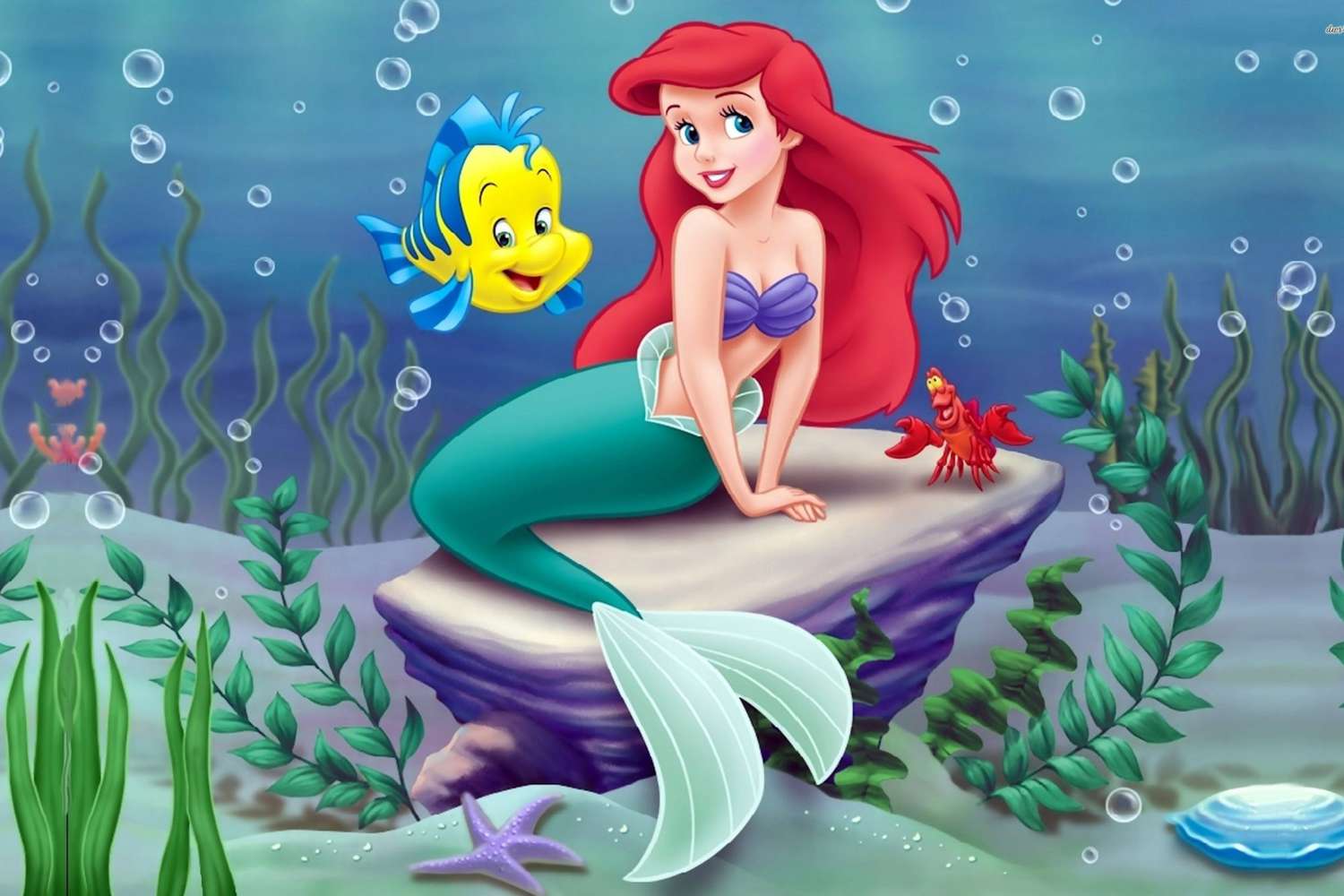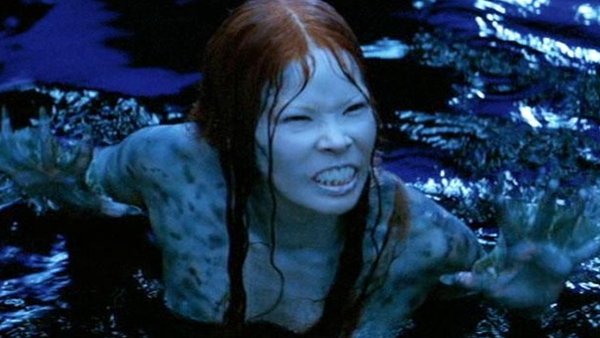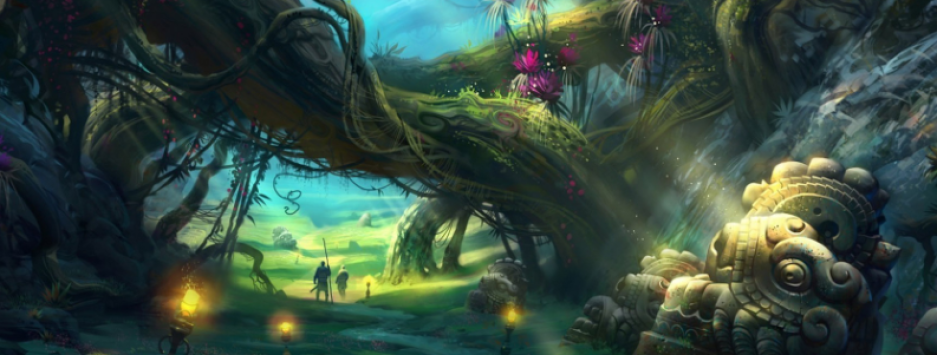And we’re back to another Monstrous Monday. I figured I’d finally touch on one of the other creatures in the actual header image so why not mermaids / mermen, otherwise known as merfolk. Keep in mind these creatures are different from sirens and the like, which might be a good topic for next week in fact. hah But anyway, let’s take a look at our Mer-people, shall we?
Obviously, one of the most well-known mermaids is Ariel from the Little Mermaid but stories about them have abounded for ages. Not to mention the fact that they run the spectrum of good and evil, though not exactly malicious per se. There are some fairly nasty versions though. The mermaids in Peter Pan (the live action movie) were more than ready to drown a person they didn’t like, and if anyone saw the Cabin in the Woods (a campy horror movie that turns most tropes on their heads), the mermaid (or merman in this case) there was downright horrifying. lol There are the occasional horror movies that also present mermaids as human flesh eaters (Lure on Netflix looks… interesting haha).



So, we obviously know about them in entertainment but where did the story of mermaids come from? According to NOAA (I know, right?), one such thought is: “The belief in mermaids may have arisen at the very dawn of our species. Magical female figures first appear in cave paintings in the late Paleolithic (Stone Age) period some 30,000 years ago, when modern humans gained dominion over the land and, presumably, began to sail the seas.” To be fair, they do more or less conflate the idea of the mermaid with the siren so take that as you will, but it’s fair to say such myths have been around for a while.
According to another source that I might defer to more on this particular topic, the Royal Museums Greenwich gives a fascinating rundown of the possible connections to various cultures around the world. For more details, I’d encourage you to follow the link to read up on them accordingly, but insofar as original origins go, they suggest: “One of the earliest mermaid legends appeared in Syria around 1000 BC when the goddess Atargatis dove into a lake to take the form of a fish. As the gods there would not allow her to give up her great beauty, only her bottom half became a fish, and she kept her top half in human form.” There’s even apparently a story about a possible merman in Mesopotamian mythology from about 5000 years ago by the name of Oannes, a male fish-god.
As we can see in the above images and like the Royal Museums points out about Atargatis, mermaids are historically recognized as half-woman and half-fish creatures. Notably, the top half is the human part and the bottom half is the fish. Spoofs are sometimes made that reverse this but in mythology and most entertainment mediums, this is the common appearance. The word mermaid comes from a combination of the old English mere which means sea and maid, a girl or young woman. The term mermaid (and also siren) are primarily Greek in origin but again, as can be seen on the Greenwich Museums page, other cultures have possible versions of their own. Please do check out the page if you want to read up on some of those other mythologies. They really are fascinating. ^_^
Okay. So far, we’ve gone over the origin and appearance of your ‘typical’ mermaid. Now let’s take a look at their general symbolism. Unlike some creatures – like the phoenix or the basilisk / cockatrice like we looked at previously, mermaids have various possible meanings. They’re as ‘changeable as the sea itself.’ Still pulling from our Greenwich Museums, they signify anything from “life and fertility in the ocean” to an “omen for storms, unruly seas, and disaster.” They, like the water they live in, otherwise embody the potential destructive nature of such an element. Furthermore, though they are not sirens, or at least are now recognized as a separate entity from them, they are still considered sirens or songstresses who can lead sailors (and other such men) astray or to unfortunate ends. Interestingly enough, a mermaid figurehead was a preferred choice for many sailors when they used to sail the open seas as such symbols were, in a sense, considered lucky. Conversely, sea monsters, including the aforementioned mermaid, were used by old cartographers to signify dangerous areas on various maps.
Now, getting a bit past the mermaid history, one other tidbit I’d like to mention before we go is what happens when they dry out on land. Like we’ve seen in various stories, mermaids potentially have the ability to become human. If we’re looking at Ariel in the Little Mermaid, magic was required to grant her legs and the process was, unfortunately, excruciating, during and after the fact. Of course in the Disney version, this was changed / omitted. If we look at an equally ‘classic’ source, if anyone saw Splash back in the day, a mermaid could potentially dry out and gain legs just by the sheer act of not being wet. Conversely, being splashed with water would reverse the process. Whether this is true or not largely depends on the source of entertainment. For some, drying out is a death sentence. For others, it means turning into a temporary human. And unlike some of our other more fantastical creatures, mermaids (and mermen) aren’t really known for having magical abilities. You may see some being able to talk with the underwater life and some may be able to control a particular element of water or the sea. I mean, King Trident could zap things underwater but he still needed his trident to do so. Mermaids are, however, known for being exceptional singers. Whether you would consider them a siren who lures men to their deaths or simply an enchanting songstress, it’s up to you to decide.
From myths to modern day entertainment and stories, there’s a lot to be said about the potential of mermaids, especially when it comes to their physical appearance. They have the typical human top half and fish bottom half but there’s a lot of room for interpretation or inspiration otherwise. I’m particularly partial to fan art images of mermaids with longer flowing tails and elaborate patterns of scales over most of their bodies but that’s that fantasy lover in me.


For now, we’ll go ahead and wrap things up with this. I think I know what I’m going to focus on next week at least. The Siren! Similar but oh so different too. haha As always though, if you have any questions or comments or anything else you like to say, please feel free. I’m all ears. Thank you though and hope to see you next time!



